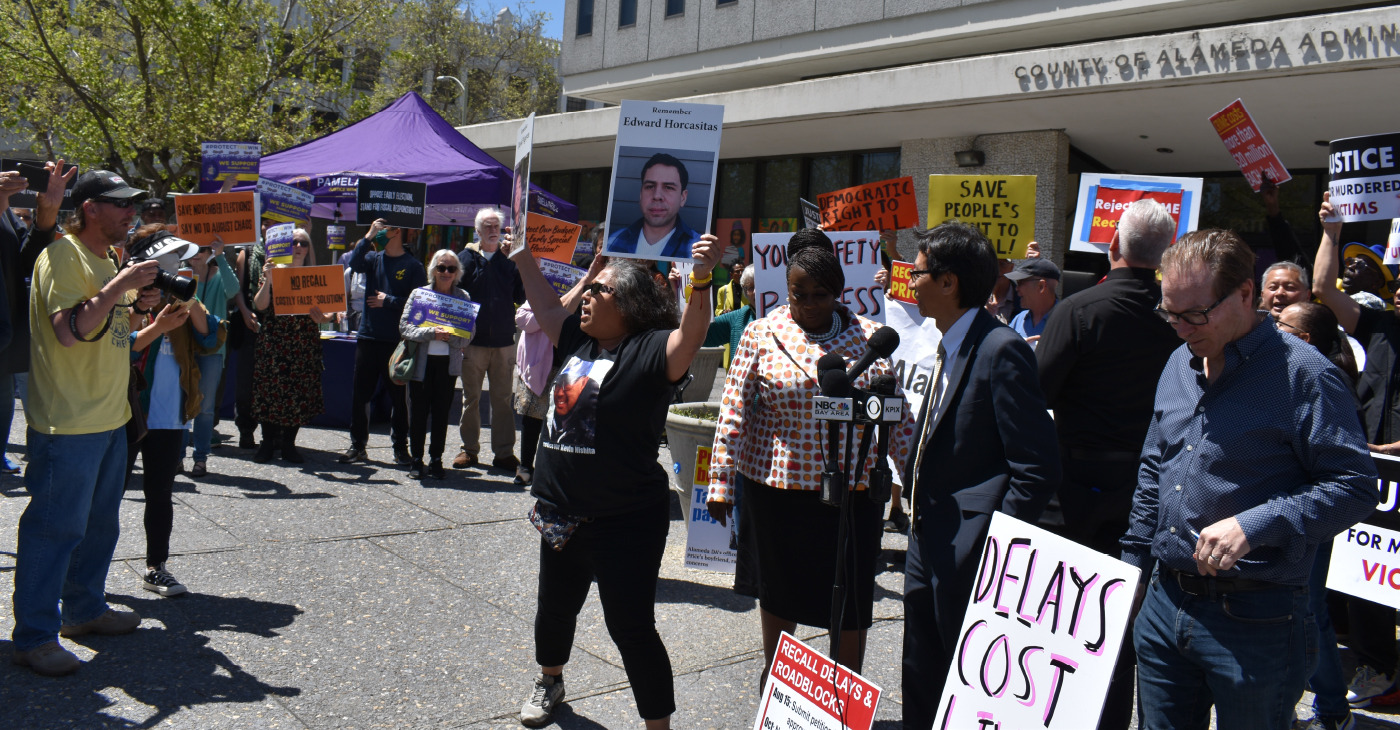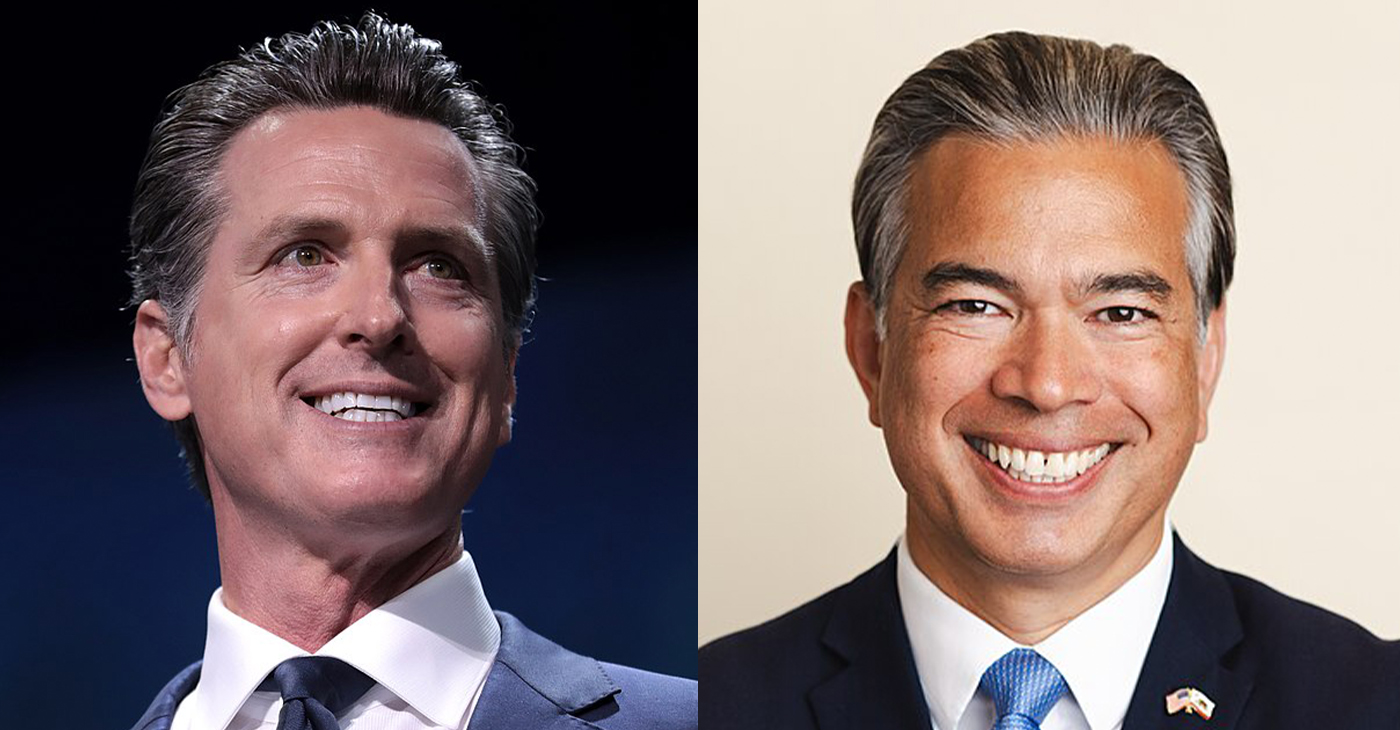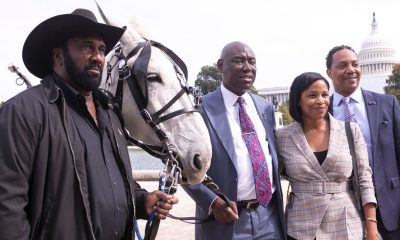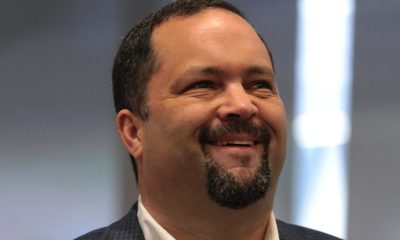Politics
Obama Commutes Sentences of 22 People in Federal Prison

In this March 16, 2015, photo, President Barack Obama speaks in the Roosevelt Room of the White House in Washington. (AP Photo/Jacquelyn Martin)
DARLENE SUPERVILLE, Associated Press
WASHINGTON (AP) — President Barack Obama on Tuesday shortened the prison sentences of nearly two dozen drug convicts, including eight serving life in prison, in an act the White House said continues Obama’s push to make the justice system fairer by reducing harsh sentences that were handed down under outdated guidelines.
The effort could lead Obama to grant clemency more often as his second and final term in office winds down.
In December, Obama issued his first round of commutations under new guidelines that were put in place to cut costs by reducing the growing prison population and grant leniency to nonviolent drug offenders sentenced to yearslong terms of confinement away from society. A commutation leaves the conviction in place and ends the punishment.
Neil Eggleston, the White House counsel, said many of the 22 people whose federal sentences will be cut short by Obama’s action would already have served their time and paid the debt they owed society had they been sentenced under current laws and policies.
“Because many were convicted under an outdated sentencing regime, they served years — in some cases more than a decade — longer than individuals convicted today of the same crime,” Eggleston said in a post on the White House blog. The 22 individuals were sentenced between 1992 and 2006.
Eggleston said Tuesday’s commutations underscore Obama’s “commitment to using all the tools at his disposal to bring greater fairness and equity to our justice system.”
Obama has now approved a total of 43 commutations during more than six years in office. Eggleston noted that Obama’s predecessor, George W. Bush, had commuted 11 sentences during his two terms.
In a letter, Obama urged each individual to take advantage of the second chance he is giving them. The White House said it was the first time Obama had sent such letters.
“I am granting your application because you have demonstrated the potential to turn your life around. Now it is up to you to make the most of this opportunity,” he wrote. “It will not be easy, and you will confront many who doubt people with criminal records can change. Perhaps even you are unsure of how you will adjust to your new circumstances.
“But remember that you have the capacity to make good choices,” Obama said.
The nonprofit Drug Policy Alliance, which advocates for less stringent drug sentences, praised the commutations. “The president’s actions today are welcome,” said Michael Collins, policy manager at DPA’s office of national affairs. Collins called on Congress to “act quickly on substantive sentencing reform,” adding, “It’s time to rectify the U.S.’s embarrassing record on mass incarceration.”
The 22 individuals whose sentences will expire on July 28 are:
—Terry Andre Barnes, East Moline, Illinois. Conspiracy to distribute cocaine base; violation of supervised release. Sentenced to 246 months imprisonment.
—Theresa Brown, Pompano Beach, Florida. Conspiracy to distribute crack cocaine. Sentenced to life in prison.
—Donel Marcus Clark, Dallas. Conspiracy; use of a communication facility; distribution and/or possession of cocaine or manufacturing in or near a school facility, aiding and abetting. Sentenced to 420 months in prison, later amended to 360 months.
—Ricky Bernard Coggins, Tallahassee, Florida. Conspiracy to possess with intent to distribute cocaine base. Sentenced to life imprisonment.
—Samuel Pasqual Edmondson, of Junction City, Kansas. Conspiracy to possess methamphetamine with intent to distribute; possession with intent to distribute methamphetamine. Sentenced to life in prison.
—Amado Garcia, Fresno, California. Conspiracy to possess with the intent to distribute methamphetamine; aiding and abetting the possession of methamphetamine; aiding and abetting the possession of heroin. Sentenced to 240 months in prison.
—Dwight Anthony Goddard, Decatur, Georgia. Possession with intent to distribute cocaine base. Sentenced to 235 months in prison.
—Lionel Ray Hairston, of Ridgeway, Virginia. Distribution of cocaine base. Sentenced to 262 months in prison.
—Francis Darrell Hayden, Loretto, Kentucky: Conspiracy to possess with intent to distribute 1,000 or more marijuana plants or 1,000 or more kilograms of marijuana; manufacture of 1,000 or more marijuana plants. Sentenced to life imprisonment.
—Harold Kenneth Herring, Havana, Florida: Possession of a firearm by a convicted felon; possession with intent to distribute cocaine base. Sentenced to life imprisonment.
—Tommie Lee Hollingshed, Memphis, Tennessee. Distribution of a controlled substance. Sentenced to 324 months imprisonment.
—Derrick DeWayne Johnson, Birmingham, Alabama. Conspiracy to possess with intent to distribute cocaine; possession with intent to distribute cocaine. Sentenced to 360 months imprisonment.
—Robert Martinez-Gil, San Antonio, Texas. Conspiracy to possess with intent to distribute cocaine and heroin. Sentenced to life imprisonment.
—David Navejar, Brooksville, Florida. Conspiracy to distribute and to possess with intent to distribute 500 grams or more of methamphetamine. Sentenced to 240 months imprisonment.
—Rudolph Norris, Washington, D.C. Unlawful distribution of cocaine base; unlawful possession with intent to distribute five grams or more of cocaine base. Sentenced to 360 months imprisonment.
—Tracy Lynn Petty, Shelby, North Carolina. Conspiracy to possess with intent to distribute cocaine and cocaine base. Sentenced to 240 months imprisonment, later amended to 204 months.
—Luis Razo, Davenport, Iowa. Conspiracy to distribute cocaine. Sentenced to 240 months imprisonment.
—Antwon Rogers, Cleveland. Conspiracy to possess with intent to distribute 139.8 grams of cocaine base. Sentenced to life imprisonment.
—Herman Rosenboro, Kingsport, Tennessee. Conspiracy to distribute and possess with the intent to distribute over five kilograms of cocaine and over 50 grams of cocaine base; distribution of a quantity of cocaine base; distribution of a quantity of cocaine. Sentenced to life imprisonment.
—Lawrence Elmo Scott, Lynchburg, Virginia. Distribution of crack cocaine within 1,000 feet of a school. Sentenced to 283 months imprisonment.
—Levar V. Wade, Chicago, Illinois. Possession of 50 or more grams of crack cocaine with intent to distribute. Sentenced to 240 months imprisonment.
—Eugene Winters, Cedar Rapids, Iowa. Conspiracy to distribute cocaine base. Sentenced to 240 months in prison.
___
Follow Darlene Superville on Twitter: http://www.twitter.com/dsupervilleap
Copyright 2015 The Associated Press. All rights reserved. This material may not be published, broadcast, rewritten or redistributed.
Alameda County
Board of Supervisors Accepts Certification of Signatures, Will Schedule Recall Election May 14
The Alameda Board of Supervisors unanimously accepted the certification of the results of the valid signatures submitted for the recall of District Attorney Pamela Price on Tuesday evening. The Board will set the election date at a special meeting on May 14. Before the meeting, recall proponents and opponents held separate press conferences to plead their cases to the Board and residents of Alameda County.

By Magaly Muñoz
The Alameda Board of Supervisors unanimously accepted the certification of the results of the valid signatures submitted for the recall of District Attorney Pamela Price on Tuesday evening. The Board will set the election date at a special meeting on May 14.
Before the meeting, recall proponents and opponents held separate press conferences to plead their cases to the Board and residents of Alameda County.
Price, who up until this point has made little public comment about the recall, held her press conference in Jack London to announce that the California Fair Political Practices Commission has opened an investigation into the finances of the Save Alameda For Everyone (SAFE) recall campaign.
The political action committee (PAC), Reviving the Bay Area, has been the largest contributor to the SAFE organization and has allegedly donated over half a million dollars to the recall efforts.
“Between September 2023 and November 2023, [Revive the Bay Area] donated approximately $578,000 to SAFE without complying with the laws that govern all political committees in California,” Price said.
Price accused the recall campaigns of using irregular signature-gathering processes, such as paying gatherers per signature, and using misleading information to get people to sign their petitions.
SAFE held their own press conference outside of the Alameda County Administration Building at 1221 Oak St. in Oakland, once again calling for the Board to certify their signatures and set a date for the recall election.
Their press conference turned contentious quickly as Price’s “Protect the Win” supporters attempted to yell over the SAFE staff and volunteers. “Stop scapegoating Price” and “Recall Price” chants went on for several moments at a time during this event.
Families of victims urged the Board to think of their loved ones whose lives are worth much more than the millions of dollars that many opponents of the recall say is too much to spend on a special election.
The Registrar of Voters (ROV) estimates the special election could cost anywhere from $15 to $20 million, an amount that is not in their budget.
The Board was presented with several options on when and how to conduct the recall election. They have to set a date no less than 88 days or more than 125 days after May 14, meaning the date could fall anywhere from late July to September.
But the County charter also states that if a general election takes place within 180 days of their scheduling deadline, the Board could choose to use the November ballot as a way to consolidate the two events.
In the event that Price is recalled, the Supervisors would appoint someone to fill the vacancy, though neither the County nor the California charter specifies how long they would have to pick a replacement.
The appointee would serve as district attorney spot until the next election in 2026. Afterwards, either they, if they run and win, or a newly elected candidate would serve the rest of Price’s six-year term until 2029. Price is unique as the only district attorney wo serves a term of six years.
The Board acknowledged that they knew last fall that this recall would come with its own set of complications when Measure B, which changed the local recall charter to match California’s, was first brought to their consideration.
Supervisors Nate Miley and David Haubert opposed discussing the measure, stating that the public would think that the Board was attempting to influence the recall campaign that had already taken off months prior.
“I think ultimately this feels like it’s going to end up in court, one way or the other, depending on who files what,” Haubert said.
Price’s legal team told the Post that the district attorney intended to consider all legal options should the recall election take place.
Miley stated that while he was in support of the amendment to the charter, he did not think it was right to schedule it for the March ballot as it would ultimately cause confusion for everyone involved.
“It has produced some legal entanglements that I think, potentially, could’ve been avoided,” Miley said.
Commentary
Opinion: Lessons for Current Student Protesters From a San Francisco State Strike Veteran
How the nation’s first College of Ethnic studies came about, bringing together Latino, African American and Asian American disciplines may offer some clues as to how to ease the current turmoil on American college campuses over the Israel-Hamas war. After the deadline passed to end the Columbia University encampment by 2 p.m. Monday, student protesters blockaded and occupied Hamilton Hall in a symbolic move early Tuesday morning. Protesters did the same in 1968.

By Emil Guillermo
How the nation’s first College of Ethnic studies came about, bringing together Latino, African American and Asian American disciplines may offer some clues as to how to ease the current turmoil on American college campuses over the Israel-Hamas war.
After the deadline passed to end the Columbia University encampment by 2 p.m. Monday, student protesters blockaded and occupied Hamilton Hall in a symbolic move early Tuesday morning.
Protesters did the same in 1968.
That made me think of San Francisco State University, 1968.
The news was filled with call backs to practically every student protest in the past six decades as arrests mounted into hundreds on nearly two dozen campuses around the country.
In 1970, the protests at Kent State were over the Vietnam War. Ohio National Guardsmen came in, opened fire, and killed four students.
Less than two weeks later that year, civil rights activists outside a dormitory at Jackson State were confronted by armed police. Two African American students were killed, twelve injured.
But again, I didn’t hear anyone mention San Francisco State University, 1968.
That protest addressed all the issues of the day and more. The student strike at SFSU was against the Vietnam war.
That final goal was eventually achieved, but there was violence, sparked mostly by “outside agitators,” who were confronted by police.
“People used the term ‘off the pigs’ but it was more rally rhetoric than a call to action (to actually kill police),” said Daniel Phil Gonzales, who was one of the strikers in 1968.
Gonzales, known as the go-to resource among Filipino American scholars for decades, went on to teach at what was the positive outcome of the strike, San Francisco State University’s College of Ethnic Studies. It’s believed to be the first of its kind in the nation. Gonzales recently retired after more than 50 years as professor.
As for today’s protests, Gonzales is dismayed that the students have constantly dealt with charges of antisemitism.
“It stymies conversation and encourages further polarization and the possibility of violent confrontation,” he said. “You’re going to be labeled pro-Hamas or pro-terrorist.”
That’s happening now. But we forget we are dealing not with Hamas proxies. We are dealing with students.
Gonzales said that was a key lesson at SF State’s strike. The main coalition driving the strike was aided by self-policing from inside of the movement. “That’s very difficult to maintain. Once you start this kind of activity, you don’t know who’s going to join,” he said.
Gonzales believes that in the current situation, there is a patch of humanity, common ground, where one can be both pro-Palestine and pro-Israel. He said it’s made difficult if you stand against the belligerent policies of Benjamin Netanyahu. In that case, you’re likely to be labeled antisemitic.
Despite that, Gonzales is in solidarity with the protesters and the people of Gaza, generally. Not Hamas. And he sees how most of the young people protesting are in shock at what he called the “duration of the absolute inhumane kind of persecution and prosecution of the Palestinians carried out by the Israeli government.”
As a survivor of campus protest decades ago, Gonzales offered some advice to the student protesters of 2024.
“You have to have a definable goal, but right now the path to that goal is unclear,” he said.
About the Author
Emil Guillermo is a journalist and commentator. A veteran newsman in TV and print, he is a former host of NPR’s “All Things Considered.”
Community
Gov. Newsom, Attorney General Bonta Back Bill to Allow California to Host Arizona Abortion Care
Gov. Gavin Newsom and Attorney General Rob Bonta announced last week that they are backing a bill introduced by the state legislative women’s caucus that would allow Arizona-based doctors to provide abortion care in California to patients from Arizona. Senate Bill (SB) 233 was authored in response to the Arizona Supreme Court’s decision on April 9 that an 1864 ban on abortion in the state is enforceable.

By California Black Media
Gov. Gavin Newsom and Attorney General Rob Bonta announced last week that they are backing a bill introduced by the state legislative women’s caucus that would allow Arizona-based doctors to provide abortion care in California to patients from Arizona.
Senate Bill (SB) 233 was authored in response to the Arizona Supreme Court’s decision on April 9 that an 1864 ban on abortion in the state is enforceable. The bill also aims to counter growing support for anti-abortion legislation in states with Republican-majority legislatures since Roe v. Wade was overturned, according to supporters.
“California will not sit idly by. We’re urgently moving legislation to allow Arizona doctors to provide safe and reliable reproductive care to Arizonans here in California,” Newsom said.
Sen. Nancy Skinner (D-Berkeley), chair of the California Legislative Women’s Caucus said that abortion bans are based on laws that set women back to a time when they had limited human rights.
“Anti-abortion forces have resurrected a dead law passed at a time when women couldn’t vote and husbands beating their wives was lawful,” Skinner said.
On April 24, the Arizona House of Representatives voted to repeal the 1864 abortion ban. It now moves to the Arizona Senate for deliberation.
-

 Community2 weeks ago
Community2 weeks agoFinancial Assistance Bill for Descendants of Enslaved Persons to Help Them Purchase, Own, or Maintain a Home
-

 Activism4 weeks ago
Activism4 weeks agoOakland Post: Week of April 3 – 6, 2024
-

 Business3 weeks ago
Business3 weeks agoV.P. Kamala Harris: Americans With Criminal Records Will Soon Be Eligible for SBA Loans
-

 Activism3 weeks ago
Activism3 weeks agoOakland Post: Week of April 10 – 16, 2024
-

 Community3 weeks ago
Community3 weeks agoAG Bonta Says Oakland School Leaders Should Comply with State Laws to Avoid ‘Disparate Harm’ When Closing or Merging Schools
-

 Community2 weeks ago
Community2 weeks agoOakland WNBA Player to be Inducted Into Hall of Fame
-

 Community2 weeks ago
Community2 weeks agoRichmond Nonprofit Helps Ex-Felons Get Back on Their Feet
-

 Community2 weeks ago
Community2 weeks agoRPAL to Rename Technology Center for Retired Police Captain Arthur Lee Johnson






















































